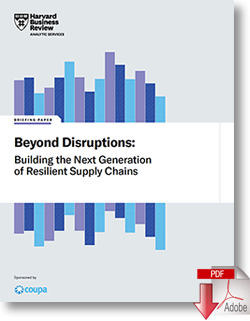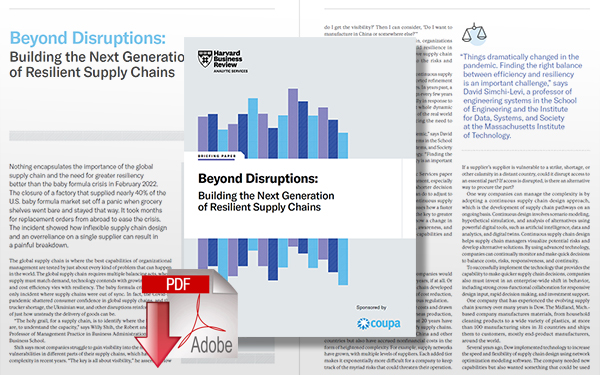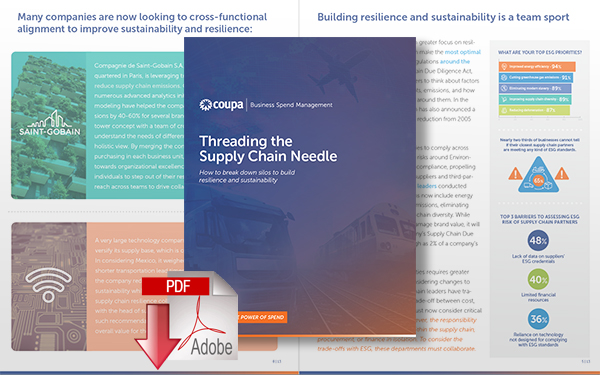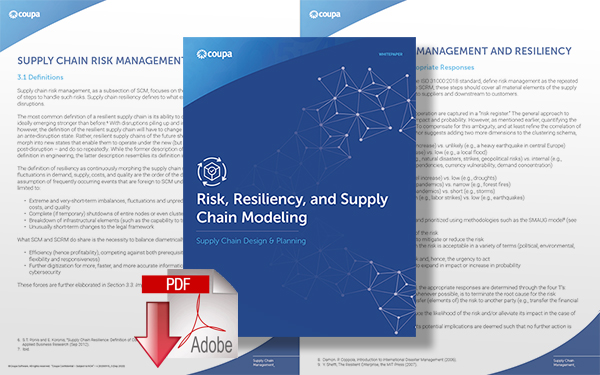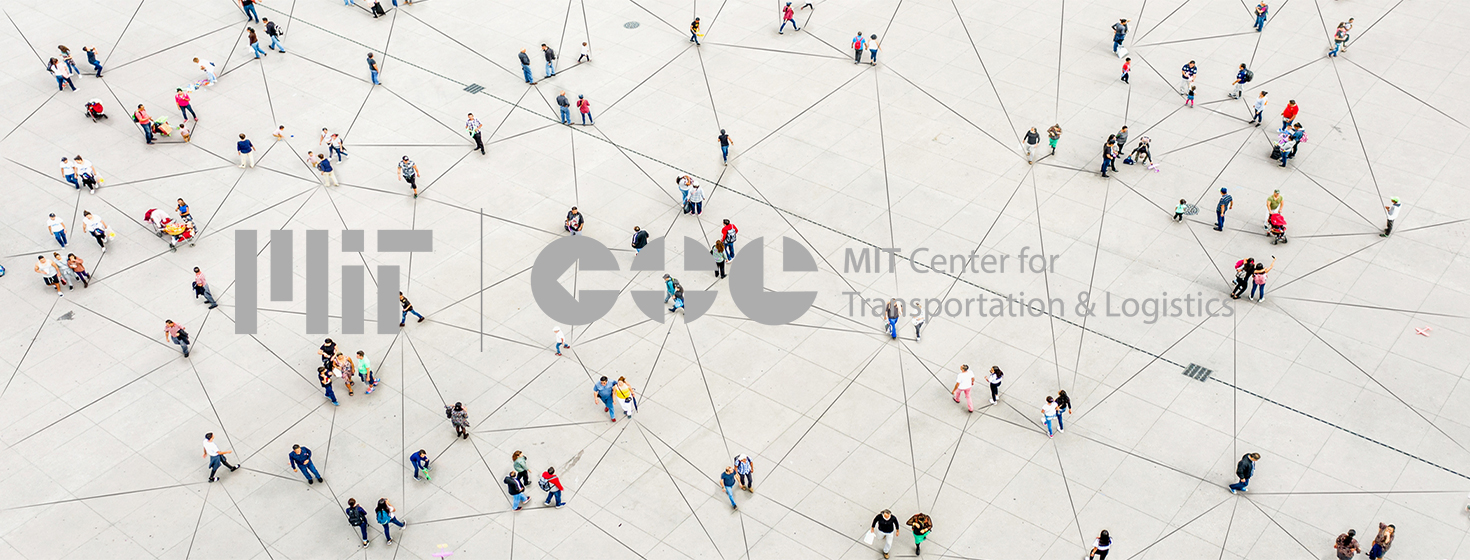Build Resilience in Supply Chains by Modeling & Designing Multiple Demand Futures

Demand modeling and supply chain design are a potent combination of capabilities that will accelerate the ability to manage risk and resiliency-related challenges.
Supply Chain Success
Being demand-driven and focusing on demand forecast accuracy is a key tenet of supply chain success.
However, one mistake that companies make is to be hyper-focused on a single number forecast that is often determined by a combination of statistical forecasting and collaborative inputs.
This process is also referred to as demand planning. We believe that for companies to be resilient, they must augment their existing demand planning approaches with a demand modeling approach that simulates multiple futures.
What is Demand Planning?
Demand planning is a process used in supply chain management to forecast demand. When done correctly, it helps ensure products are delivered on time by anticipating customer wants and needs. In so doing, demand planning results in more customer satisfaction, better revenue forecasting, and inventory management that aligns stock levels with the peaks and valleys in demand.
Demand planning requires staff to examine internal and external factors that could have an impact on demand in either direction. Such factors may include increased customer interest in a product or service, natural disasters, shifts in weather patterns, political or regulatory issues, and global crises.
For planning to be effective, organizations must strike a balance between having enough inventory available to meet expected demand, vs risking stockout or inventory write-offs due to excess.
Limitations of Demand Planning
Traditional time-series demand forecasting typically means taking an inside-out approach, often relying on an organization’s historical, internal data to predict demand. The area that companies make a mistaken assumption though is the medium-long-term period demand.
The assumption is that long-term demand plans can be just generated by extending the time period to three or four years, whichever may be the required horizon. The past is not reflective of the future, especially in an era where so many disruptions and large-scale changes are happening throughout the world.
The danger is that demand planning doesn’t take into account external factors that continually impact the market. Change is accelerating faster than inside the four walls of today’s enterprises.
Data is growing exponentially, technology continues to disrupt, customers demand an omnichannel buying experience, and businesses are constantly grappling with macroeconomic conditions and industry complexities. While historical performance may offer helpful insights toward what the future holds, change is happening far too rapidly to rely on internal rear-view mirror metrics.
Role of Demand Modeling
Companies need demand modeling to augment their existing demand planning processes, especially for the operational and strategic horizons. As the name indicates, the first key requirement is to build a realistic demand model from the ground up. The demand needs to be broken down into a series of internal and external causal factors, and the impact of each of these factors on the demand needs to be modeled.
Machine learning methods are utilized to leverage external factors such as weather, Consumer Price Indices, housing starts, demographic trends, and Gross Domestic Product to model the demand. Uncertainty data is then utilized to come up with a probabilistic forecast that can be used to feed the supply chain design digital twin and run a host of scenarios to identify points of resiliency challenges and optionality.
The probabilistic demand forecast represents the multiple futures that an organization could face if supply were unconstrained. However, since most companies face supply constraints (especially in the new normal) supply chain design plays the role of aligning the long-term demand with supply. Where gaps are identified, the optionality of supply sources is identified through the supply chain design along with cost/service/revenue implications. This process must be repeated on a continuous basis to keep long-term demand and supply alignment while factoring in potential risks as part of demand modeling.
Demand modeling and supply chain design are a potent combination of capabilities that will accelerate the ability to manage risk and resiliency-related challenges.
On-Demand Webinar
Beyond Disruptions: Building the Next Generation of Resilient Supply Chains
Duration: 30 minutes
The global supply chain is where the best capabilities of management are constantly tested by every kind of problem.
Through the crises of the past few years, organizations have learned the hard lesson that to build resilient supply chains they need to improve flexibility through greater visibility into the risks and vulnerabilities they face.
On October 6, in a live, interactive Harvard Business Review Analytic Services webinar, HBR-AS Managing Director Alex Clemente shared insights from a recent white paper on the keys to building resiliency in supply chains. In particular, he will focus on continuous supply chain design, which is an ongoing technology-supported refinement of supply chain structures, product flows, and policies.
Clemente then joined a discussion with Madhav Durbha, VP of Supply Strategy at Coupa, and Arjun Varma, Director of Capacity Management at Beiersdorf. They will share their perspectives and experiences on:
- The evolving supply chain environment
- Heightened supply chain urgency and drastically shorter time frames
- How companies can adjust to these requirements
- Deploying continuous supply chain design and digital twins
- Changing the organizational culture to embed new capabilities and make them sustainable
The Covid-19 pandemic and other supply chain crises have shined a spotlight on the importance of supply chain resiliency and flexibility.
Listen to these supply chain experts and HBR-AS for insights on building resiliency in supply chains:
Alex Clemente
Managing Director, Harvard Business Review Analytic Services
Madhav Durbha
VP Supply Chain Strategy, Coupa
Arjun Varma
Director, Strategic Capacity Management, Beiersdorf
Julie Devoll
Editor of Research and Special Projects, Harvard Business Review
Don't Miss This On-Demand Webinar: REGISTER NOW!
About the Author
Nari Viswanathan is currently Sr. Director of Product Segment Marketing at Coupa, where he helps bring products to markets in the areas of Supply Chain Design and Planning. Over the past 20 years, Nari has held VP and Director of Product Management, Research, and Marketing roles at Aberdeen Group, River Logic, Steelwedge, and E2open. He has significant experience building products from the ground up and managing the P&L for a product suite. Nari holds a master’s degree in Manufacturing Systems Engineering from the University of Wisconsin-Madison and a bachelor’s degree in Mechanical Engineering from the Indian Institute of Technology, Chennai.
Related Resources
Beyond Disruptions: Building the Next Generation of Resilient Supply Chains
This Harvard Business Review briefing paper examines how leading companies are creating tremendous value by embracing these practices and captures insights from recognized thought leaders on building resilience and agility, which have become strategic differentiators. Download Now!
The New Competitive Edge - Analytics-Driven Supply Chain Design
This executive guide, developed in collaboration between the Massachusetts Institute of Technology’s Center for Transportation & Logistics (MIT CTL) and Coupa, presents a vision for future-proof, analytics-driven supply chain design. Download Now!
Threading the Supply Chain Needle
Learn how to break down departmental silos and design resilient and sustainable supply chains. Download Now!
Continuous Design Outsmarts Disruption: A Blueprint for Supply Chain Resiliency
In this ebook, we discuss how continuous design can reduce risk, improve resilience, and turn supply chain challenges into a competitive advantage. Download Now!
Risk, Resiliency, and Supply Chain Modeling
This paper first examines why existing supply chain management practices do not naturally develop resilient supply chains and why some of the existing supply chain processes are not suitable for addressing such risks and required responses. Download Now!
More Resources from Coupa
Related Article: MIT Center for Transportation & Logistics Visual Analytics for Supply Chain Design
Article Topics
Coupa News & Resources
How Microsoft Improved ESG & Sustainable Spending Working Together with Community.ai Capabilities Supply Chain Agility in an Ever-Changing World How Sourcing Can Respond in Dynamic Markets to Drive Supply Chain Value Build Resilience in Supply Chains by Modeling & Designing Multiple Demand Futures Beyond Disruptions: Building the Next Generation of Resilient Supply Chains 6 Truths About Business Spend Management Technology 5 Ways Supply Chains Can Flourish in an Inflationary World More CoupaLatest in Supply Chain
Biden Gives Samsung $6.4 Billion For Texas Semiconductor Plants Apple Overtaken as World’s Largest Phone Seller Frictionless Videocast: The Importance of Water at the U.S./Mexico Border with Commissioner Maria-Elena Giner, International Boundary and Water Commission Why are Diesel Prices Climbing Back Over $4 a Gallon? Walmart Unleashes Autonomous Lift Trucks at Four High-Tech DCs Plastic Pollution is a Problem Many Companies are Still Ignoring Luxury Car Brands in Limbo After Chinese Company Violates Labor Laws More Supply Chain

